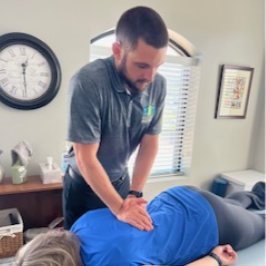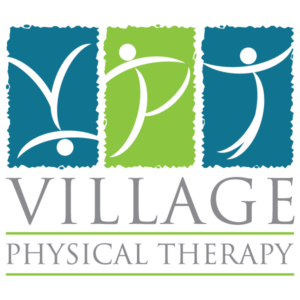Speed Workouts for Runners
It is easy to get stuck in a rut when it comes to running. Whether you’re not seeing the progress you once were, or you are just bored with the routine, it can be discouraging. Most runners have the goal of getting faster over time, but progress will often plateau at a certain point and can leave you feeling unsure of how to improve. Fortunately, there is a plethora of research on speed workouts for runners. These proven methods can improve your running speed, efficiency, and help decrease the likelihood of injuries. Each of these methods have at least one thing in common, they are introducing variety to your workout routine.
Whether you are training to increase your speed over a short, middle, or long distance, repeated hill training is a great speed workout for runners. Research has shown repeated hill workouts to have positive effects on VO2 max, running economy (energy expenditure), lactate threshold, and resting heart rate, all of which can positively affect speed endurance and race performance.1,2 Repeatedly maintaining the higher power output required by uphill running leads to quicker and often more effective muscular adaptations. Additionally, running uphill will naturally encourage improved technique – forefoot strike, increased trunk lean, and increased recruitment of posterior chain musculature – than running on flat or downhill surfaces. Improvements in technique will improve energy efficiency. As an added benefit, running uphill has less ground reaction forces (a.k.a. impact) at the knee than flat or downhill, meaning potential lower risk of knee injury, although this has mixed scientific evidence. Most hill training programs recommend 4-10 repetitions of running uphill at a high intensity (85-90% effort) for 60-90 second intervals. Grade of hill should be somewhere between 4-10%. Knowing those parameters is helpful and important. That being said, don’t stress the details too much. No need to break out the bubble level or altimeter to measure the gradient. Find a hill, and run up it… hard. If you’ve never done hill training before, you’ll learn pretty quickly that it is not a light, easy run… but the burn is worth it for the results.
Critical velocity can be an important term to know when it comes to speed workouts for runners. This is defined as a speed or pace that can be sustained for 30-40 minutes. For some, this could mean your race pace for a 5K. For more elite runners, this could be your 8-10K race pace. Regardless, this should be a pace that is difficult, but achievable, to maintain for 30 minutes. It should feel like you are near your max effort. Once you have a good understanding of what this pace looks like, you can incorporate it into your workouts. You could keep it simple and perform 20-30 minute runs at this pace or you could incorporate it into a track workout with repetitions of 400-1000 meters runs at critical velocity. Pushing yourself to maintain this speed will lead to adaptations such as improved VO2 max and have been shown to correlate with improved times at longer distances.3,4
Fartlek and interval training are also excellent speed workouts for runners. Interval training is defined as high intensity bouts with recovery periods in between. The distance/time and intensity of these intervals can vary based on runner preference and goals. A classic example of interval training would be performing ten 400m runs with 2-3 minutes of recovery in between each. The recovery could be fully resting, walking, or light jogging. The primary point of interval training is to keep the work intervals at a high intensity. Fartlek (Swedish word meaning “speed play”) in workouts are a type of interval training that have the added benefit of continuous movement. Fartlek runs consist of set changes of speed between faster efforts and slower recovery periods of jogging. An example of a Fartlek workout would be a 30-minute run with alternating periods of 2 minutes hard and 1 minute easy running. Considering the continuous work being performed during a Fartlek, the harder periods are typically not going to be as high intensity as other interval training programs, but should still be fairly difficult to maintain. The intervals in each of these running programs can be set based on distance or time. Research on interval training demonstrates athletic performance improvements by improving maximal oxygen uptake and running economy along with muscular and metabolic adaptations, all of which will positively affect speed endurance.5
Sometimes improvements in running speed are found in the weight room as opposed to on the track or trail. Running is a repetitive plyometric activity that, while being an excellent form of exercise, does not introduce resistance and movement in a large variety of planes, directions, or intensities. Especially if you are used to running or other cardio as your only method of exercise, weight lifting will expose your body to different and new demands that will lead to more adaptations. While not technically a speed workout for runners, strength training can be a very effective method of improving speed, strength, and endurance, all of which can have positive effects on running economy and speed.6,7 In addition to running performance, weight lifting can improve joint, tendon, and muscle health, which can significantly decrease the likelihood of pain related to activity. While weight lifting has been scientifically and anecdotally associated with decreased injury risk across a variety of sports, this idea has not been consistently proven among runners.8,9
At the end of the day, there are a variety of speed workouts for runners that can improve your technique and performance. The most important thing is that your training program is guided towards your specific goals and includes a variety of demands and intensities. If your goal is to get faster over longer distances, your training should reflect that overall, but that doesn’t mean you won’t benefit from occasional sprints or weight lifting sessions. Much of the research that shows the benefits of each of these individual training programs, also shows that results are even better when they are used along with other types of workout routines. Having this variety will certainly make your workout routine more exciting, help make you a more dynamic and healthy runner, and, most importantly, improve your PR in your next race!

About the Author
Aaron Bass, PT, DPT, CSCS, Cert. DN
Aaron was born and raised in Fuquay Varina. He graduated from NC State University in 2016 with a major in Human Biology and a minor in Sports Science and graduated from Campbell University in 2020 with a Doctorate of Physical Therapy. Aaron’s primary areas of interests are pediatrics, lower extremity injuries, athletic injuries, post-operative patients, and low back pain. Aaron has extensive experience working with post operative patients, primarily from his time working at Cape Fear Orthopedics and Sport Medicine in Fayetteville NC. His time at Cape Fear included working with a large variety of post-operative patients including joint replacements, rotator cuff repairs, ACL repairs, meniscus repairs, joint fusions, ankle reconstructions, and many more. Aaron also has unique experience working with pediatric populations with orthopedic and neurological conditions during his clinical rotation at Children’s Hospital of the King’s Daughter in Virginia Beach.
Aaron enjoys spending time with his wife and two sons, running, lifting weights, being active and outside, all things NCSU athletics, collecting bourbon, and talking about sports and movies.
- Taddese, Nigatu worku and Dr. Aschenaki. “The impact of hill training on middle and long distance athletes: with specific reference to oromia water works athletics club, Ethiopia.” International journal of scientific and research publications 7 (2017): n. pag. Barnes, Kyle R., Will G. Hopkins, Michael R. McGuigan, and Andrew E. Kilding. “Effects of Different Uphill Interval-Training Programs on Running Economy and Performance”. International Journal of Sports Physiology and Performance 8.6 (2013): 639-647
- Midgley AW, McNaughton LR, Wilkinson M. Is there an optimal training intensity for enhancing the maximal oxygen uptake of distance runners?: empirical research findings, current opinions, physiological rationale and practical recommendations. Sports Med. 2006;36(2):117-32. doi: 10.2165/00007256-200636020-00003. PMID: 16464121.
- Florence S, Weir JP. Relationship of critical velocity to marathon running performance. Eur J Appl Physiol Occup Physiol. 1997;75(3):274-8. doi: 10.1007/s004210050160. PMID: 9088849.
- García-Pinillos, F., Soto-Hermoso, V. M., & Latorre-Román, P. A. (2017). How does high-intensity intermittent training affect recreational endurance runners? acute and chronic adaptations: A systematic review. Journal of Sport and Health Science, 6(1), 54–67. https://doi.org/10.1016/j.jshs.2016.08.010
- Denadai, B.S., de Aguiar, R.A., de Lima, L.C.R. et al. Explosive Training and Heavy Weight Training are Effective for Improving Running Economy in Endurance Athletes: A Systematic Review and Meta-Analysis. Sports Med 47, 545–554 (2017). https://doi.org/10.1007/s40279-016-0604-z
- Yamamoto, Linda M; Lopez, Rebecca M; Klau, Jennifer F; Casa, Douglas J; Kraemer, William J; Maresh, Carl M. The Effects of Resistance Training on Endurance Distance Running Performance Among Highly Trained Runners: A Systematic Review. Journal of Strength and Conditioning Research 22(6):p 2036-2044, November 2008. | DOI: 10.1519/JSC.0b013e318185f2f0
- Lauersen JB, Bertelsen DM, Andersen LB. The effectiveness of exercise interventions to prevent sports injuries: a systematic review and meta-analysis of randomised controlled trials. Br J Sports Med. 2014 Jun;48(11):871-7. doi: 10.1136/bjsports-2013-092538. Epub 2013 Oct 7. PMID: 24100287.
- Wu H, Brooke-Wavell K, Fong DTP, Paquette MR, Blagrove RC. Do Exercise-BasedPrevention Programs Reduce Injury in Endurance Runners? A Systematic Review and Meta-Analysis. Sports Med. 2024 May;54(5):1249-1267. doi: 10.1007/s40279-024-01993-7. Epub 2024 Jan 23. PMID: 38261240; PMCID:PMC11127851.
If you find yourself searching for run club near me we welcome you you join us throughout the week at one of our local run meetups. CLICK HERE TO LEARN MORE. Did you find the SPEED WORKOUTS FOR RUNNERS helpful? If so, mosey on over to our NEWS and BLOG section for more running related insight.


